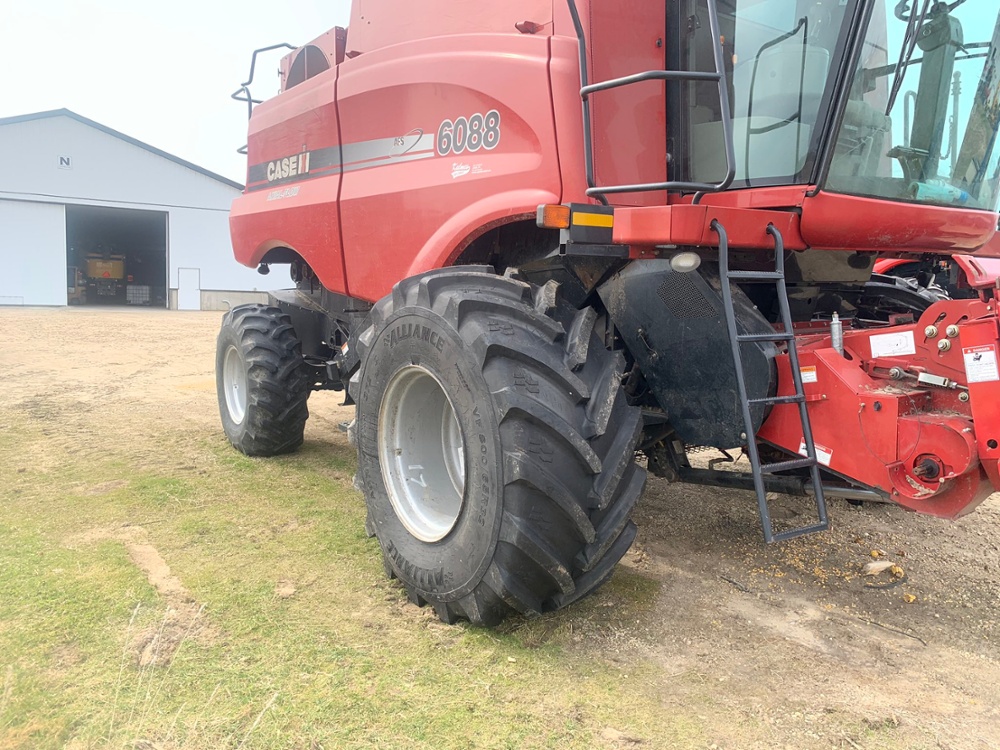Minimizing the Expense of Soil Compaction
Farming is a tough business. As we've seen again and again this year, uncontrollable factors such as weather and commodity prices can upset even the best-laid plans—turning bumper crops into busts and high hopes into low margins in a matter of minutes. Because there are so many components of the business farmers can’t manage, it’s critical to take control of what they can. Two such factors farms can affect are cost and compaction, which are more closely linked than you might expect.
Photo courtesy of Degenhardt Tire
The Cost of Compaction
When many farmers think about costs, their minds turn to inputs such as fertilizer, herbicide, and fuel, or other expenses like equipment, maintenance, and labor. Lost in the accounting are unseen expenses—for example, soil compaction. This is because when we talk about compaction, it’s often in relation to yield but rarely presented in dollars.
A recent paper from researchers at North Dakota State University and the University of Minnesota examined the financial impact of deep soil compaction—below the depth of tillage—in the two states and the results were staggering. The paper estimates an economic cost of $587 million over the next two years for every 10% of land compacted during the 2019 harvest. Even more shocking is that impacted lands may range up to 30% at a cost of more than $1.75 billion through 2021.
Considering that the study only accounts for financial losses resulting directly from soil compaction—it doesn’t project the cost of issues related to compaction such as erosion, nutrient losses, or flooding—the price is enormous. However, if you incorporate those other connected factors, the economic cost of compaction would inflate drastically. And that's just the cost to farmers in Minnesota and North Dakota.
Harvest 2019
While factors related to compaction can boost the cost of compaction, it’s worth noting just how terrible 2019 was. The North Dakota-based Ag Week Magazine called it The Year of the Miserable Harvest, but it wasn’t just the fall that felt cursed.
- Unprecedented snow was dropped on the Midwest in March 2019, the result of a “bomb cyclone,” delaying planting and causing historic flooding
- The lower 48 states had the wettest 12-month period on record from May 2018 through April 2019—receiving 6.25 inches more precipitation than the 20th-century average
- Corn prevented plantings totaled a record 11.4 million acres—215% higher than the previous record
- Soybean prevented plantings tallied a record-high 4.5 million acres—99% higher than the previous record
- Heavy rains and an October snowstorm stalled harvest in the Upper Midwest and created the wet conditions that make soil even more prone to compaction
- By the final USDA Crop Progress report (December 8), just 43% of North Dakota’s corn crop was harvested
The Future of Harvest
Although 2019 was especially miserable, weird weather is becoming an increasingly common problem facing farmers. Look no further than the derecho that ripped through Iowa, damaging or destroying a large percentage of the state’s corn crop, just a few weeks ago. A 2018 report from Purdue showed that Indiana’s climate is changing—with warmer temperatures, more precipitation, and a longer frost-free season which all adds up to:
- More yield-reducing extremely hot days
- Less severe cold weather which controls pests and invasive species
- A rise in heavy rain events and an increase in the chance of flooding
While the report is focused solely on Indiana, shifting weather patterns are occurring across the nation and most long-time farmers don’t need a report to tell them about it; they’re seeing the change happen every year up close and in person.
What You Can Do This Harvest
One way farmers can cut the cost of soil compaction and prepare themselves to operate in unfavorable conditions is with their tires. Tires are the place where farm equipment connects with the ground; consequently, they play an oversized role in the effect that equipment has on fields.
Tire manufacturers are building tires that help farmers battle compaction and the toll it exudes on profits. We offer a variety of tires—from conventional radials to flotation to VF—that are designed to deliver large, even footprints that disperse the weight of heavy machinery and reduce its impact on farmland, including the super-heavy combines, grain carts, and semis that are a regular sight at harvest.
Other Ways to Cut the Cost of Harvest with Tires
The difference between making a profit and taking a loss can be razor thin on the farm, and small savings and incremental improvements can add up to big dollars at the end of the year. Here are a few other ways tires can help your bottom line:
Traction: The large compaction-reducing footprints of today’s advanced farm tires also put more lugs on the ground for maximum traction.
Fuel: Improved traction maximizes wheel slipping, which equates to more efficient fuel use.
Longer-lasting: Stubble-resistant rubber compounds and features like steel belts (all of our Alliance AgriFlex IF/VF tires are steel-belted) help tires last longer and lower the total cost of ownership.
Warranty: A company that believes in its tires stands behind them. We back up select Alliance AgriFlex IF/VF tires with a 10-year warranty and the rest of our farm tire lineup with a 7-year warranty.
Contact your local dealer or rep today to learn more about how our tires can help at harvest or for further details on our rebate.



